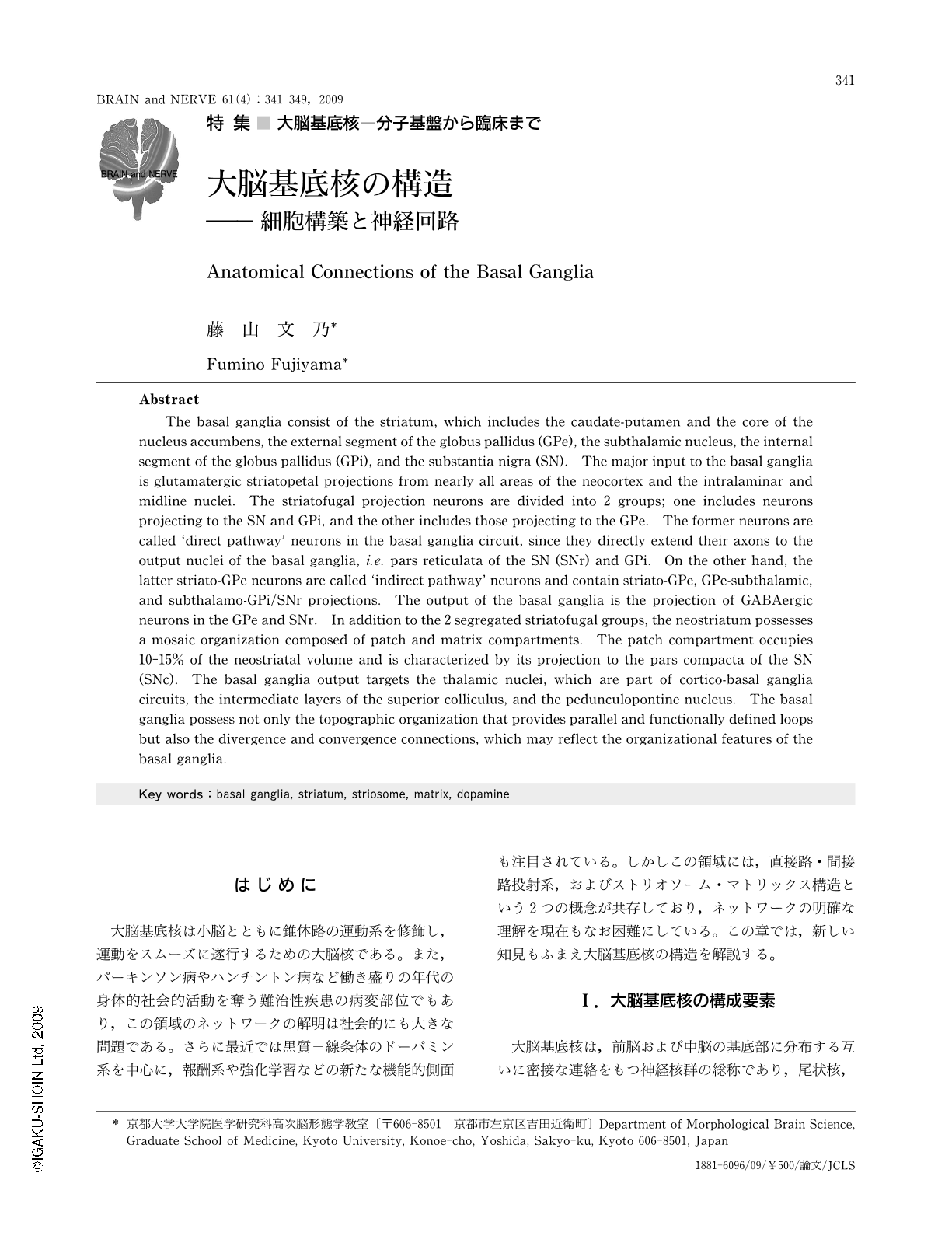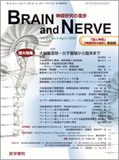Japanese
English
- 有料閲覧
- Abstract 文献概要
- 1ページ目 Look Inside
- 参考文献 Reference
はじめに
大脳基底核は小脳とともに錐体路の運動系を修飾し,運動をスムーズに遂行するための大脳核である。また,パーキンソン病やハンチントン病など働き盛りの年代の身体的社会的活動を奪う難治性疾患の病変部位でもあり,この領域のネットワークの解明は社会的にも大きな問題である。さらに最近では黒質-線条体のドーパミン系を中心に,報酬系や強化学習などの新たな機能的側面も注目されている。しかしこの領域には,直接路・間接路投射系,およびストリオソーム・マトリックス構造という2つの概念が共存しており,ネットワークの明確な理解を現在もなお困難にしている。この章では,新しい知見もふまえ大脳基底核の構造を解説する。
Abstract
The basal ganglia consist of the striatum,which includes the caudate-putamen and the core of the nucleus accumbens,the external segment of the globus pallidus (GPe),the subthalamic nucleus,the internal segment of the globus pallidus (GPi),and the substantia nigra (SN). The major input to the basal ganglia is glutamatergic striatopetal projections from nearly all areas of the neocortex and the intralaminar and midline nuclei. The striatofugal projection neurons are divided into 2 groups; one includes neurons projecting to the SN and GPi,and the other includes those projecting to the GPe. The former neurons are called ‘direct pathway' neurons in the basal ganglia circuit,since they directly extend their axons to the output nuclei of the basal ganglia,i.e. pars reticulata of the SN (SNr) and GPi. On the other hand,the latter striato-GPe neurons are called ‘indirect pathway' neurons and contain striato-GPe,GPe-subthalamic,and subthalamo-GPi/SNr projections. The output of the basal ganglia is the projection of GABAergic neurons in the GPe and SNr. In addition to the 2 segregated striatofugal groups,the neostriatum possesses a mosaic organization composed of patch and matrix compartments. The patch compartment occupies 10-15% of the neostriatal volume and is characterized by its projection to the pars compacta of the SN (SNc). The basal ganglia output targets the thalamic nuclei,which are part of cortico-basal ganglia circuits,the intermediate layers of the superior colliculus,and the pedunculopontine nucleus. The basal ganglia possess not only the topographic organization that provides parallel and functionally defined loops but also the divergence and convergence connections,which may reflect the organizational features of the basal ganglia.

Copyright © 2009, Igaku-Shoin Ltd. All rights reserved.


